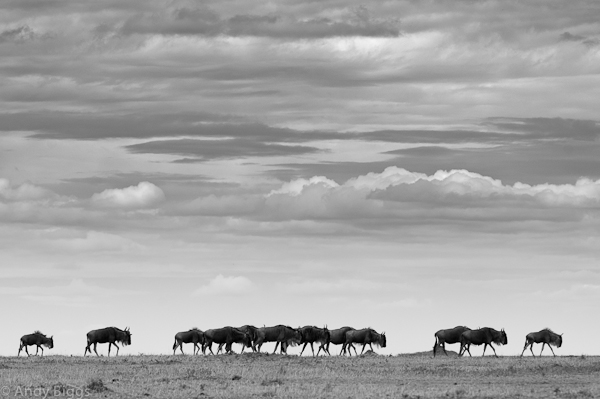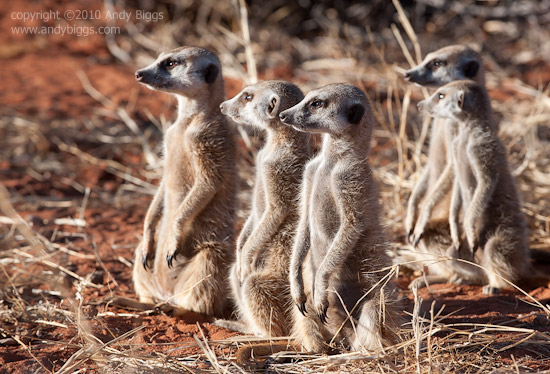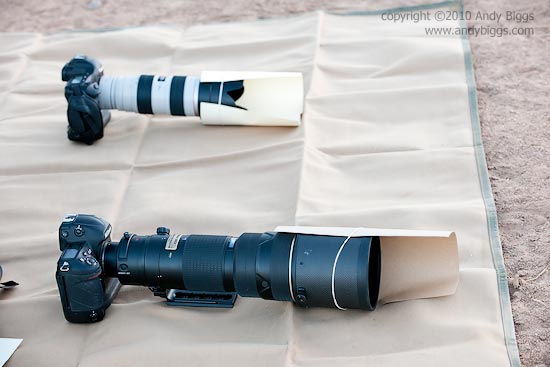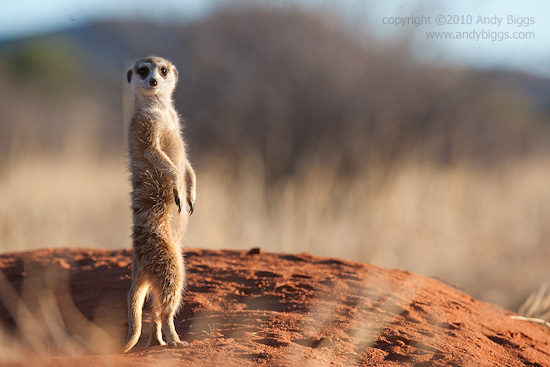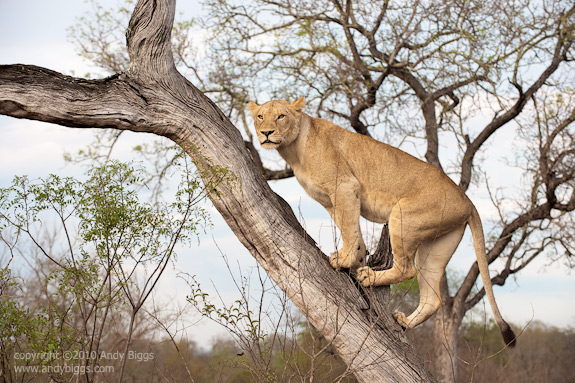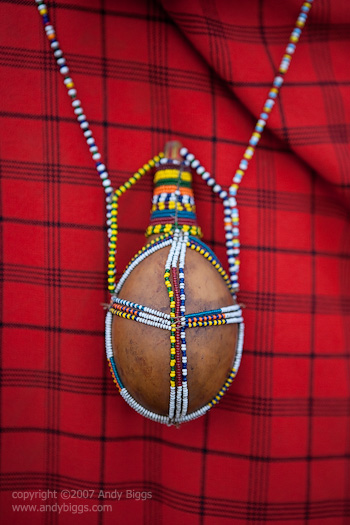A few months back a friend, fellow photographer and NASA astronaut Alan Poindexter invited Leslie and I to visit NASA and to participate in a behind-the-scenes visit of the NASA facilities. I have lived in Houston most of my life, and I have only been able to visit the parts of NASA that are on the typical tourist destinations. Without hesitation, I was eager to go! When Dex asked me what kinds of activities I was most interested in, the first thing out of my mouth was to spend some time in the actual Space Shuttle flight simulator. It wasn’t a guaranteed visit, but very likely that we could get some time on the simulator.
During our visit to NASA, we did more than just spend time in the Space Shuttle Flight Simulator, such as a visit to an Orbiter mockup, the International Space Station mockup, the Soyuz capsule, and two Mission Control rooms.
Since the Space Shuttle program is coming to an end, and Congress has not allocated any more funding to NASA after the STS-134 mission, Dex won’t be included in any more flights with this program. He was the Pilot on STS-122 and he was the Commander of STS-131. Since Dex’s NASA tenure was coming to a close, he used some of his time to take us on a behind-the-scenes tour of what goes on at NASA.
The following images are fairly self explanatory, so I just threw together some short pieces of text underneath each image. Leslie and I had a great time, and feel honored that we were able to see behind the scenes some of the places that the general public are not able to see. It saddens me that our space program seems to have lost its way, and that we don’t seem to have a clear view of what our next steps are going to be with space exploration. After my visit to NASA, I am much more in touch with how things work and why space exploration is important, and I can only hope that we keep funding future missions into space.

The entrance to the Orbiter Space Shuttle Flight Simulator at NASA
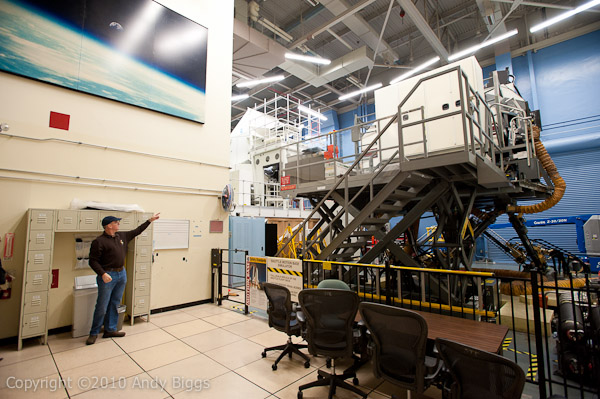
..and here it is. It sits on top of a large hydraulic platform.


The control room for the simulator

Some of the information displays for the simulator

The interior of the Orbiter simulator. Everything is the same as the real Orbiter vehicles. You do experience a bouncy liftoff, which lasts a number of minutes. You are on your back, so the feeling is very ‘real’. What amazed me was the amount of time from liftoff until the unbuckling of restraint belts, which is around 12 minutes. Amazing.
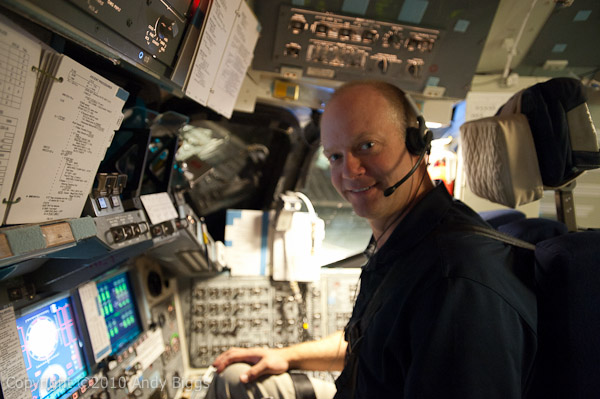
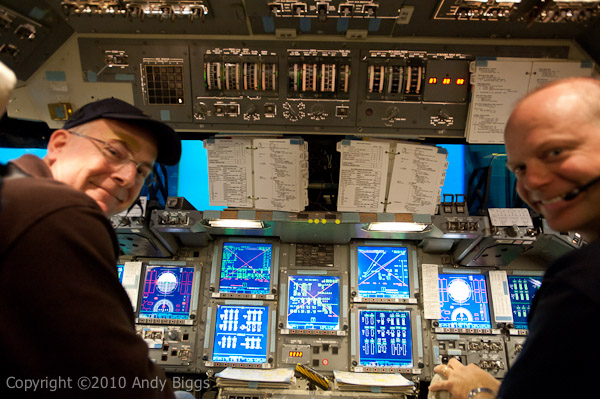
Dex and I in the flight deck
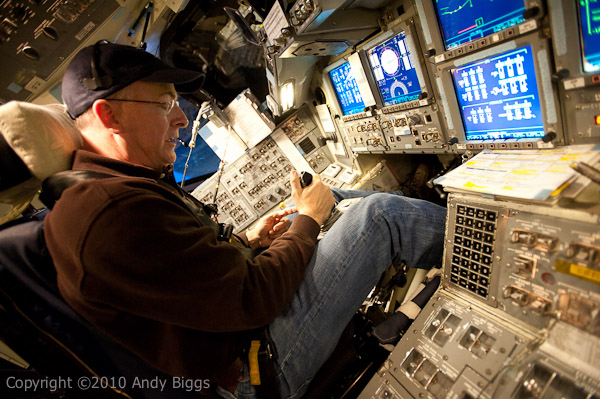
Dex is explaining to me how to adjust the stick for optimum comfort

And no, this isn’t a video game.

Velcro is all over the place!

Ok, this does look like a video game, circa 1980. The technology works, though. (Remember Tank Command? Well, the graphics are eerily similar)
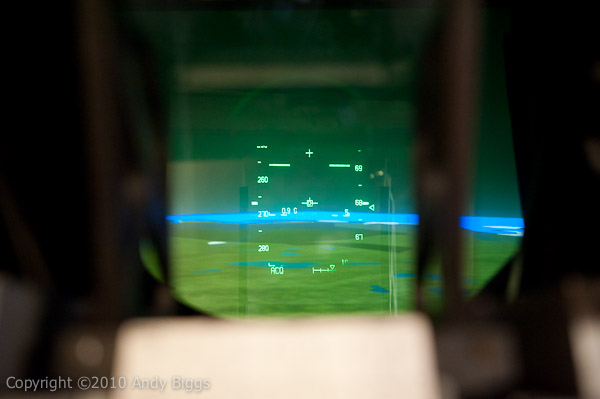
Here I am attempting a landing of the Orbiter, and the earth’s horizon has just come into view.


The Waste Collection System ‘training room’

And this is how you learn to use the potty in space. Correct aim is *essential*!
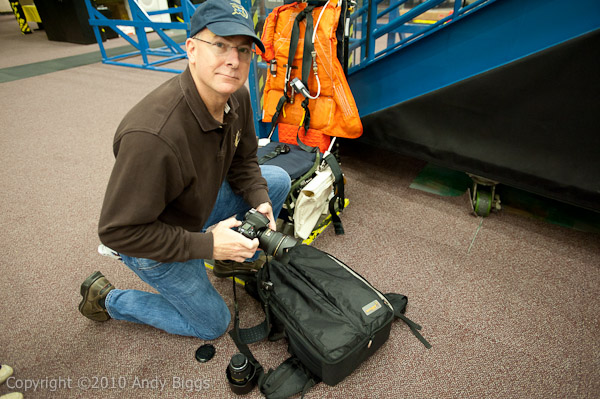
Alan Poindexter and his trusty Gura Gear Kiboko camera bag

A mockup of the Orbiter. The inside is a perfect replica of the real Orbiter

Leslie and Dex, about to climb in

Dex’s wonderful wife, Lisa. Always with a smile.
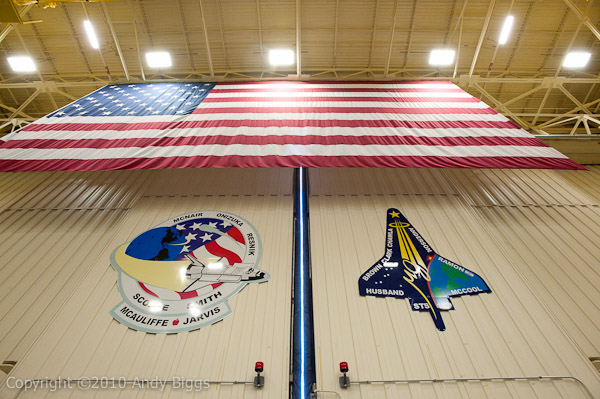
A memorial to those brave astronauts who were lost on prior Space Shuttle missions (Challenger and Columbia)

Aboard the International Space Station (ISS) volume mockup
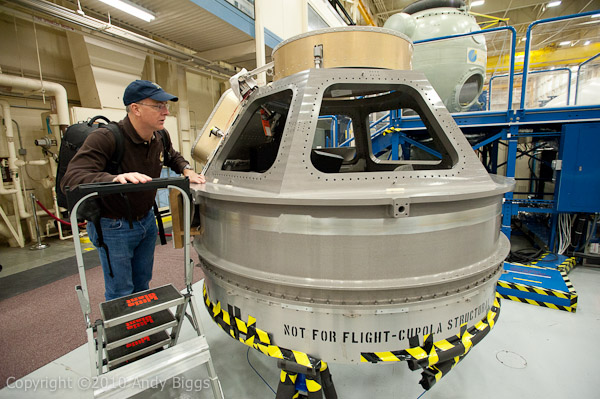
The International Space Station (ISS) cupola. The most amazing photograph was taken of Tracy Caldwell Dyson in 2010
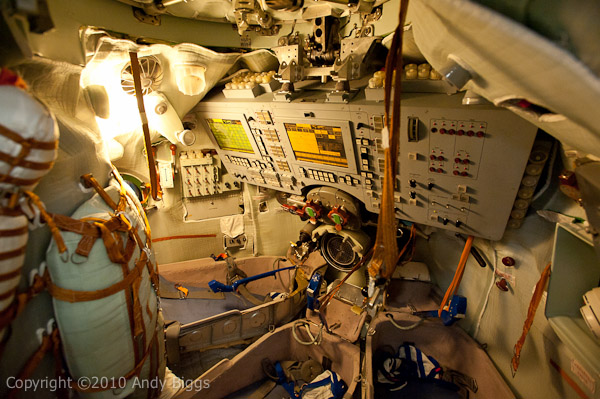
The interior of the Russian Soyuz capsule

Mission Control Center in Building 30 at Johnson Space Center
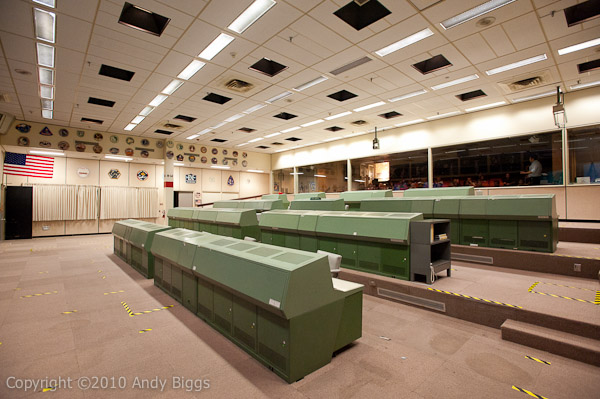
The Apollo era Mission Control Center (MOCR1). It was actually used for the Apollo and Space Lab missions
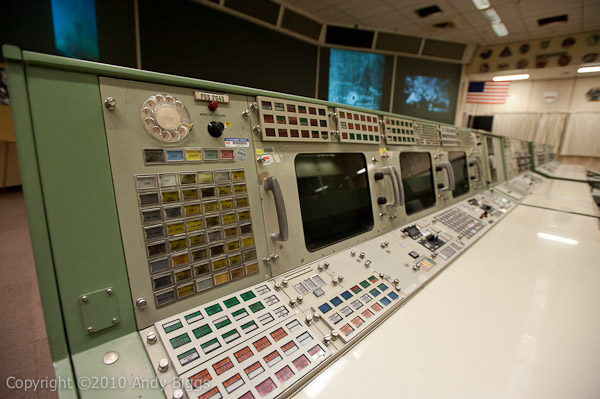
Ah, rotary phones

The actual Mission Control Center (MOCR2). They were going through the STS-133 simulation when we were there, so we weren’t able to spend much time in this room
 Friday, February 18, 2011 at 01:34PM
Friday, February 18, 2011 at 01:34PM 